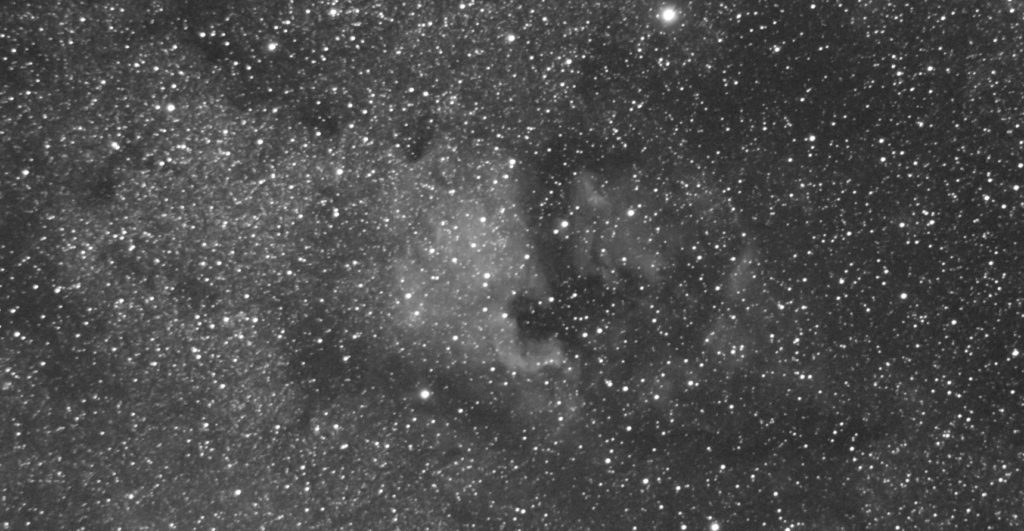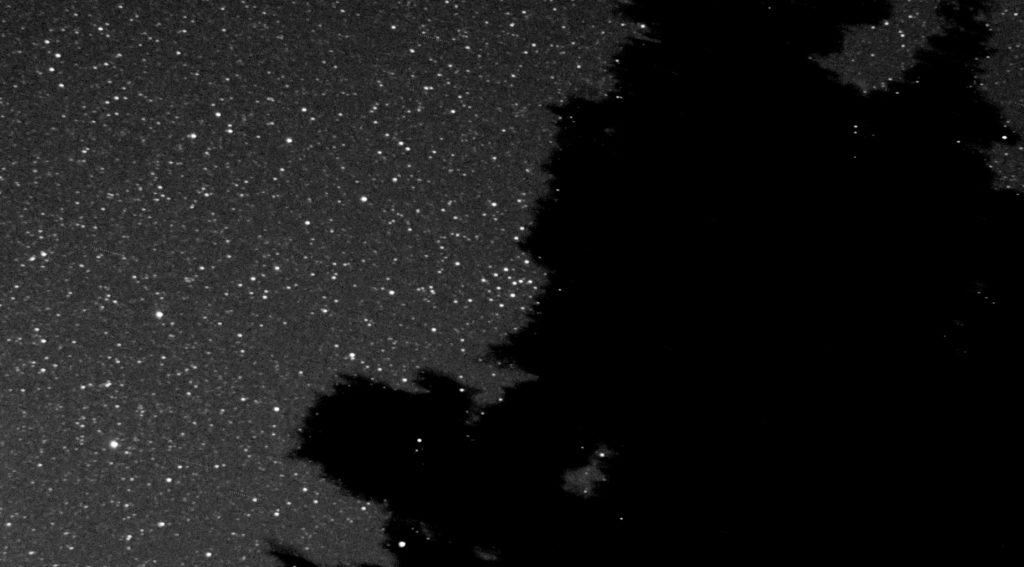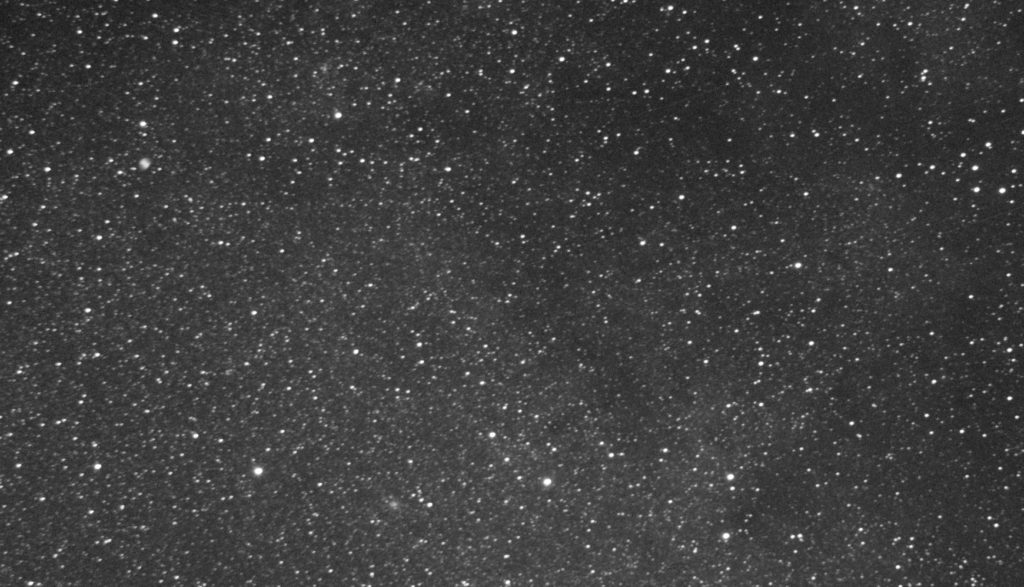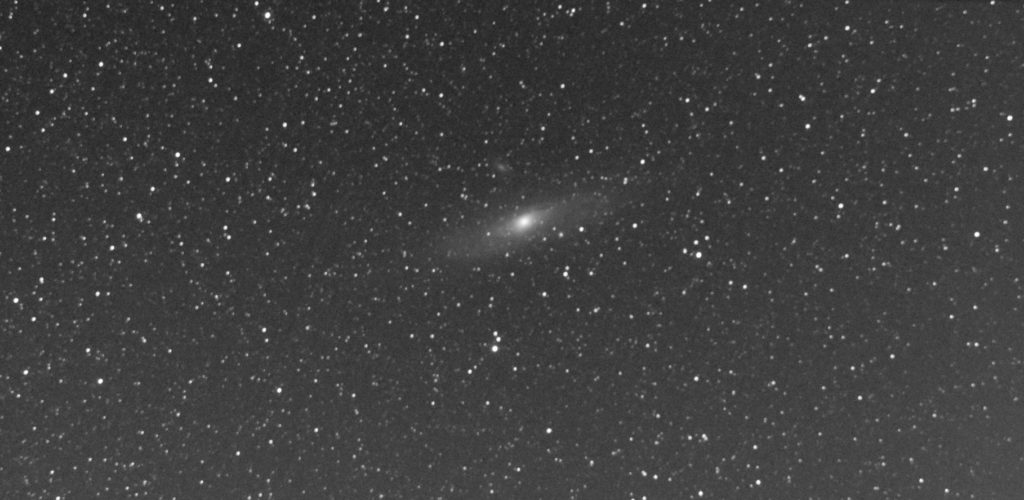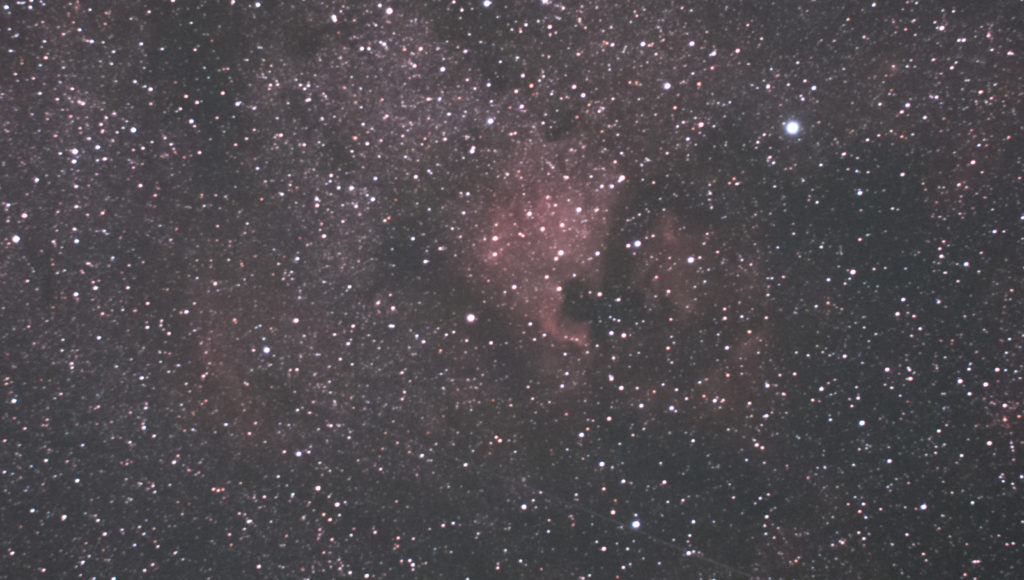
A thread on the astronomy forum Cloudy Nights a couple of years ago explored the possibility of capturing quick ‘snapshot’ astrophotos with small but sensitive monochrome cameras and inexpensive, small-aperture lenses of less than 25mm (!) aperture. Even better, this approach used no astronomy mount or tracking at all, just a fixed camera tripod and a PC to capture and stack each image over the course of a minute or two. Lightweight, cheap, simple.
It seemed like a preposterous idea. So of course I had to try it!
After rummaging through a bin of old lenses and assorted accessories I came up with ramshackle assembly, about the size of a beer can, that I popped on a small tripod. I chose a ZWO ASI290MM, a monochrome planetary camera renowned for its high sensitivity. For a lens, I dusted off a 40-year-old Nikon 28mm f/2.8 Ai-S that I picked up for a song a few years ago. I used an old PC running the inexpensive SharpCap software package that recorded images from the camera (ZWO has a free package called ASILive that delivers similar results). Then I waited a few days for the Moon to get out of the way and tried to capture a few images from the back deck in less-than-ideal sky.
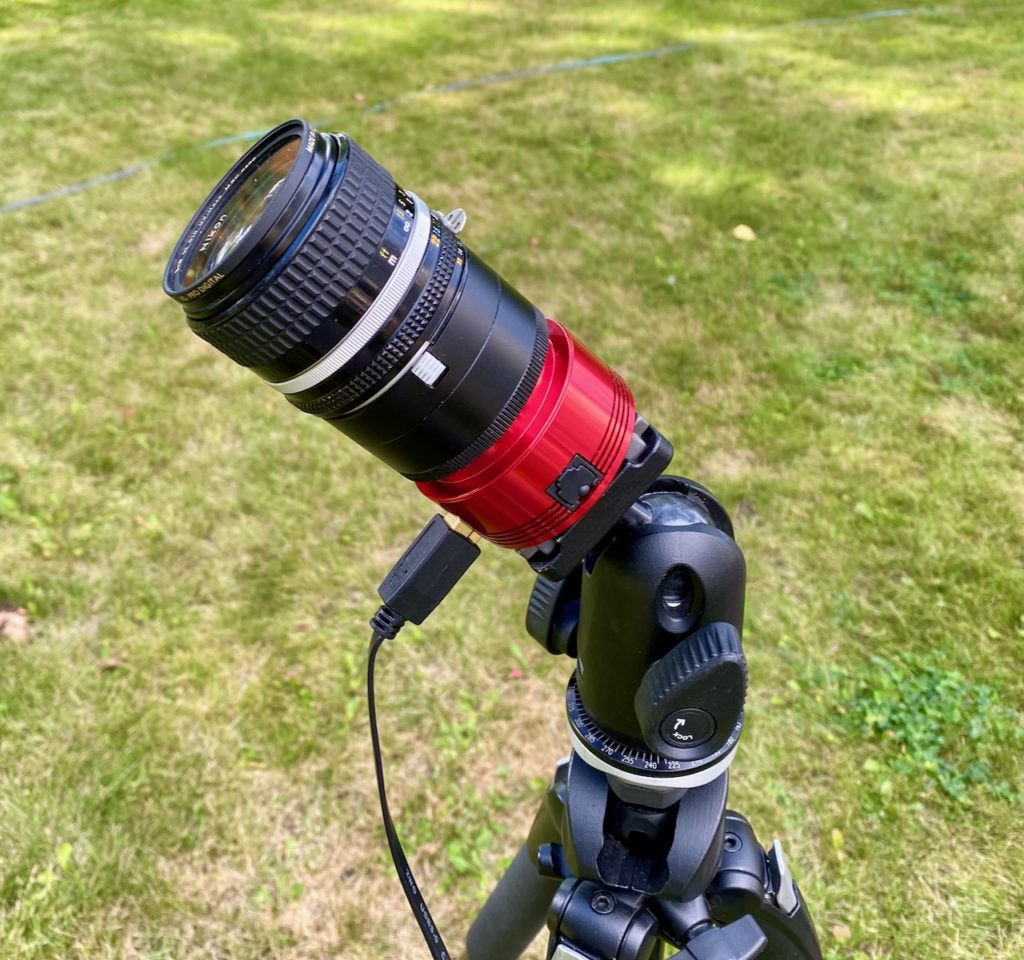
The results? No, not magazine-quality images. But I did get fast images of stars and brighter deep-sky objects, and in nearly real time. I had no finder attached to the assembly, so I just aimed the thing towards various vistas along the Milky Way, focused the lens, and set SharpCap to start capturing. I used short 5-second exposures to minimize the effect of field rotation. Even the first frame showed enough detail to make it interesting, but I let SharpCap stack frames for a few minutes to help reduce noise. With a fixed mount, the camera did not track the sky so the stacked image ‘shrank’ over time as stars wandered off the edge of the frame. But the frame size was large to start with, about 11° x 6°, so letting the image stack for a few minutes only lost a small fraction of the frame. I did a quick a crop and a little light post-processing (though this is not necessary – you’ll see good results right at the computer) to deliver the results below.
Here’s a monochrome shot of the North America Nebula and Pelican Nebula…
And here’s the open cluster IC 4665 (near the asterism Taurus Poniatowski) nestled just to the left of the tree…
And of course one of my favorites, the Veil Nebula complex and open cluster NGC 6940 (right of center)…
And here’s most of the arrow-shaped constellation Sagitta (at bottom of the image, pointing left) and its little globular cluster M71. The Dumbbell Nebula (M27) is at the upper left and Collinder 399, the Coathanger asterism, is at upper right…
Galaxies? Here’s 2-million-year-old light from the Andromeda Galaxy (M31)…
Now the Double Cluster (lower left), Stock 2 (to the right of the Double Cluster), and the faint outline of the Heart Nebula (IC 1805) just right of center…
And finally the magnificent California Nebula (NGC 1499)…
Ugly, but tons of fun!
This sort of set-up is ideal for travel or camping or just a quick look from your backyard. Camera and lens fit in your pocket, and you might not even need a tripod if you can find a rock to prop up the camera and aim it in the right direction. You get a similar field of view as wide-field binoculars. And you don’t need an old camera lens. Instead, try CS-mount lens designed for security cameras which often cost <$40. (Like this one, for example).
Mono cams (especially the ASI290MM or other cameras based on the same sensor) work best. I tried a color camera, the very good ASI385MC from ZWO, but it wasn’t as sensitive. Also, it’s hard to deal with color casts caused by light pollution. Still, it gave respectable images (see image of the North America Nebula at the top of this page). It would work better in darker sky.
You can have a great time with this sort of set-up, and it only costs a few hundred dollars (mostly for the camera) if you already have a PC and tripod lying around. You can grab a dozen images over the course of a short observing session. And it’s perfect for sharing the sky with your friends and family. Anything to help get you and more people out under the stars.
Share This:
